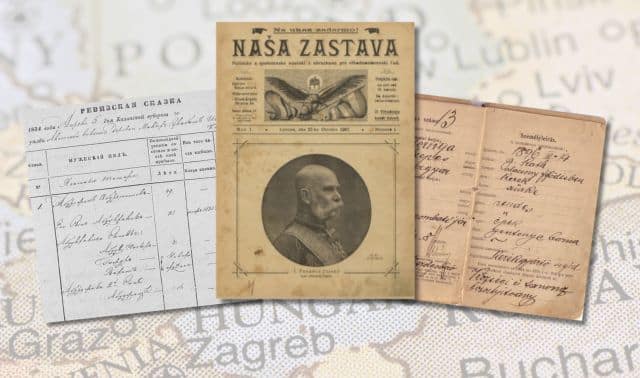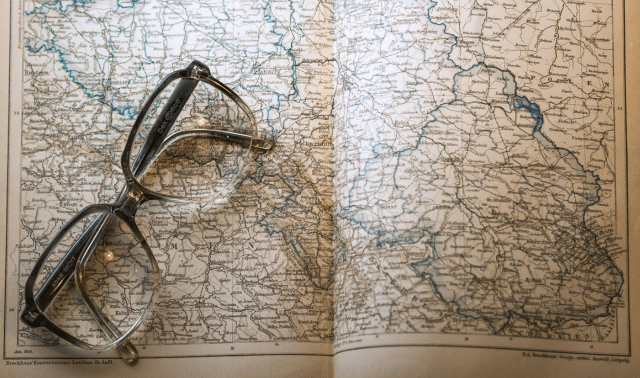
If you’re sleuthing for Slovak ancestors, you’ll discover the FHL has microfilmed church registers, censuses and other records for hundreds of Slovak localities (do a catalog place search on Slovakia, then click View Related Places for a list). That means you can tap many sources stateside. Czech roots seekers aren’t so lucky: The library has far fewer Czech records, primarily because the Church of Jesus Christ of Latter-day Saints, which operates the FHL, hasn’t reached microfilming agreements with the Czech government.
Of course, historical records of Czechs and Slovaks extend well beyond the FHL’s holdings, and we’ll outline other ways to get them in the next section. But first, let’s take a look at those countries’ record-keeping practices, so you know what’s available.

Civil registration in Czech lands began in 1869; in Slovakia, it initiated in 1895. After World War I, the new Czechoslovak state adopted its own vital-record-keeping policies. In 1952, the government began gathering all registers more than 100 years old into state regional archives (statni oblastni archivy). More-recent records (and a few older ones) remain in local records offices.
Census: The Austrian government first enumerated Czechs by name in 1651, then again in 1754 and 1770. Earlier censuses (scitání lidu) were merely head counts taken for taxation. The most genealogically useful enumerations for Slovak researchers are Hungary’s 1869 census and 1848 census of Jews.
You can get the Hungarian records on microfilm from the FHL; do a place search on Slovakia and look under the census headings.
Military records: In 1868, Austria instituted universal conscription, requiring every male citizen to serve three years of active duty in the military (modified to a two-year term in 1912). The system remained until the empire’s dissolution.
Muster rolls and qualification lists, taken from the 1700s through 1915 (mostly by Austria), often contain the names of the enlistee’s hometown and parents, as well as his religion. The FHL has them on microfilm; look in the catalog under Austria — Military Records. The catch: You have to know which regiment your ancestor belonged to in order to use them.


Now that you’re familiar with Czech and Slovak records, what do you when you’ve exhausted the FHL’s resources? You have three options for getting additional information:
1. Write to the archives. Although the Czech and Slovak archival systems rank among the world’s best, genealogists have to cope with access limitations. You can write to the Slovak Administration of Archives of the Ministry of Interior to request pre-1900 records; for later vital records, contact the Slovak embassy. Before you write, investigate postal requirements and seek guidance on how to compose an effective research query. You can download a free letter-writing guide from FamilySearch: Click the Search tab, then Research Helps, then the letter S.
To the dismay of Czech roots seekers — who have relied heavily on letter-writing in the absence of microfilms — recent developments suggest that the Czech government no longer accepts records requests by mail. Consult the Czech embassy in Washington, DC, to gain an understanding of the policy changes.
2. Go abroad to research in person. When letter-writing leads dry up (or if writing isn’t an option), you can travel to the old country to perform research yourself. Well before making the journey, contact the archives to find out the facility’s hours, policies, holdings and any associated fees. Familiarize yourself with the types of documents available and the various languages they’re written in. If possible, bring a translator with you. Surf the Web to find companies specializing in travel to Eastern Europe.
Your trip should include some time exploring your ancestral town. To make contact with current residents, as well as the local mayor or priest, search online Czech and Slovak telephone dictionaries for familiar surnames. Such advance preparation will ensure you make the most of your experience.
3. Hire a professional researcher. In some cases, your best bet may be to enlist the services of a professional researcher who’s familiar with the area’s geography, history and languages — and who can access restricted records. Though this option isn’t cheap, it may prove the most effective for locating multiple records overseas. For a list of researchers, see <www.cgsi.org/research.asp?i=4>.

If you make a research trip to Prague or another Czech or Slovak city, contact the archives ahead of time to learn about their research policies.



